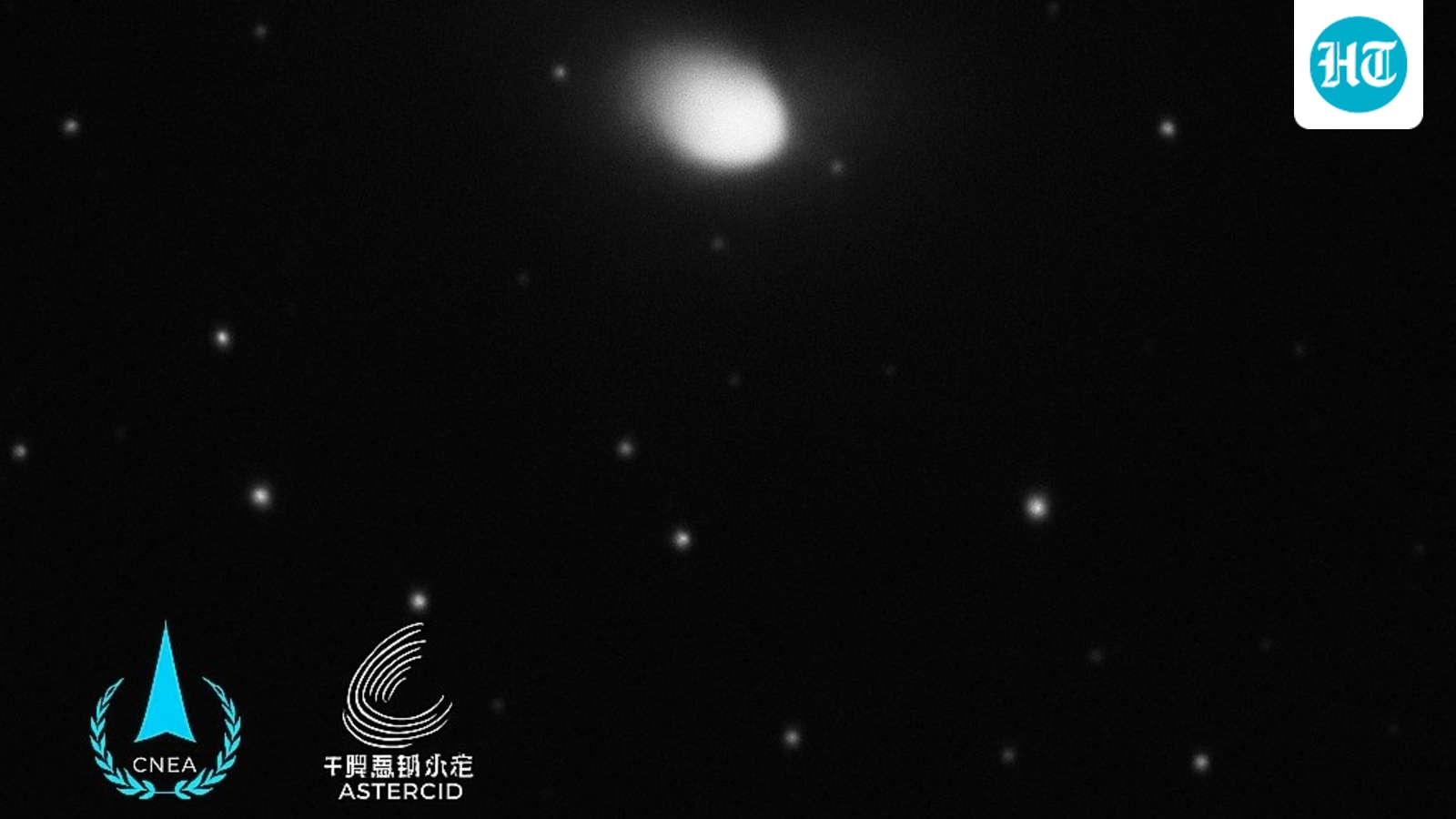World
Interstellar Object 3I/ATLAS Defies Comet Norms as Mystery Grows

The interstellar object 3I/ATLAS is challenging established theories about comets, particularly with its recent observations. New images captured on November 5 at the R. Naves Observatory in Spain reveal that this object, roughly the size of Manhattan, lacks a tail—an expected feature of comets as they approach the Sun. This absence has led some scientists to question whether 3I/ATLAS is indeed a naturally occurring comet.
Astrophysicists have noted that a typical comet, when heated by solar radiation, should produce a substantial “coma” of gas and dust, resulting in a tail that can account for up to 13% of its mass. According to Avi Loeb, an astrophysicist from Harvard University, if 3I/ATLAS continues to show no tail, it suggests a different composition or origin. In comments to the New York Post, he stated, “It is likely not a naturally occurring comet.” Loeb further explained that the object exhibits non-gravitational acceleration, which would typically require significant evaporation of its mass, but preliminary images post-perihelion show no evidence of this phenomenon.
Unusual Characteristics of 3I/ATLAS
3I/ATLAS has displayed several anomalies since its discovery. Notably, it brightened by a factor of five after perihelion and took on an unusual green hue. Additionally, it features an “anti-tail” that points toward the Sun, contrary to the expected behavior of a comet. This hyperbolic trajectory indicates that the object has originated from outside our Solar System.
Loeb has compared the current images of 3I/ATLAS to those of the solar system’s comet Lemmon, which displays a characteristic tail pointing away from the Sun. The stark difference between these two objects raises further questions about the nature of 3I/ATLAS.
Future Observations and Implications
Looking ahead, the most detailed images of 3I/ATLAS are anticipated to come from NASA’s Mars Orbiter, specifically its HiRISE camera. However, the release of these images has been delayed due to the ongoing government shutdown. As reported by the New York Post, 3I/ATLAS is currently on a trajectory that will bring it near Jupiter on March 16, 2026. During this close approach, two orbiters from NASA and the European Space Agency will be positioned to observe the object closely.
3I/ATLAS first entered our solar system on June 14, 2025, and its peculiar characteristics continue to spark interest and debate among scientists. The investigation into its origins and behavior not only challenges existing comet theories but may also contribute to a deeper understanding of interstellar objects and their potential implications for our solar system.
-

 World4 months ago
World4 months agoSBI Announces QIP Floor Price at ₹811.05 Per Share
-

 Lifestyle4 months ago
Lifestyle4 months agoCept Unveils ₹3.1 Crore Urban Mobility Plan for Sustainable Growth
-

 Science3 months ago
Science3 months agoNew Blood Group Discovered in South Indian Woman at Rotary Centre
-

 World4 months ago
World4 months agoTorrential Rains Cause Flash Flooding in New York and New Jersey
-

 Sports3 months ago
Sports3 months agoBroad Advocates for Bowling Change Ahead of Final Test Against India
-

 Top Stories4 months ago
Top Stories4 months agoKonkani Cultural Organisation to Host Pearl Jubilee in Abu Dhabi
-

 Science4 months ago
Science4 months agoNothing Headphone 1 Review: A Bold Contender in Audio Design
-

 Top Stories4 months ago
Top Stories4 months agoAir India Crash Investigation Highlights Boeing Fuel Switch Concerns
-

 Sports3 months ago
Sports3 months agoCristian Totti Retires at 19: Pressure of Fame Takes Toll
-

 Business4 months ago
Business4 months agoIndian Stock Market Rebounds: Sensex and Nifty Rise After Four-Day Decline
-

 Politics4 months ago
Politics4 months agoAbandoned Doberman Finds New Home After Journey to Prague
-

 Top Stories4 months ago
Top Stories4 months agoPatna Bank Manager Abhishek Varun Found Dead in Well









